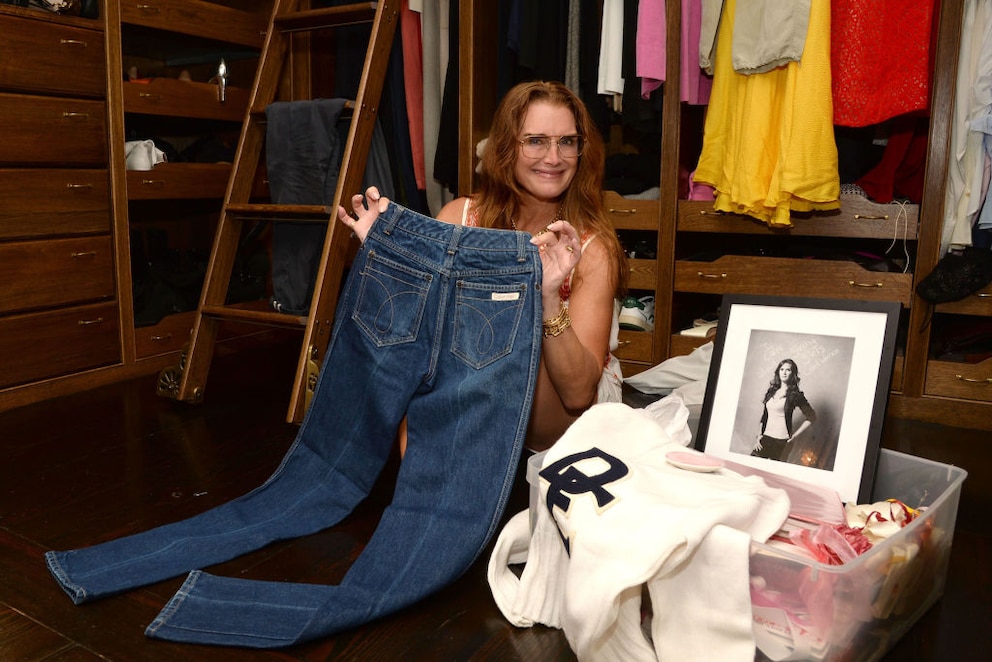June 10, 2025, 12:52 pm | Read time: 5 minutes
Did you know that it’s not a given that we enjoy wearing jumpsuits in the summer? Just a few decades ago, a blazer in the office was unthinkable for women. STYLEBOOK has investigated which clothing items we owe to feminism.
Vivienne Westwood, Coco Chanel, Yves Saint Laurent—they all made history! And not as important political figures but as designers. Fashion influences society, and vice versa! Innovative collections and designs can break old structures and create freedom. Feminism and fashion? They go hand in hand.
Overview
Why Feminism Influences Fashion
Whether it’s ties we incorporate into our outfits today or grandpa’s old hat we occasionally wear, some clothing items originate from a male context. However, some trendy pieces have become so organically established in the fashion world that we forget the struggle behind some of them. Many clothing items were taboo for women. Especially more comfortable looks were reserved for “hard-working men,” while women were expected to manage the household in high heels and dresses. Fortunately, those times are over.
Also interesting: Traditional gender roles make people unhappy in the long run, according to a new study
Marlene Pants
They look elegant, and they are comfortable: These two attributes were long considered incompatible in women’s fashion. Tight corsets, heavy skirts, and suffocating collars were meant to express a woman’s class and delicacy. Coco Chanel made a clear statement against this with her wide-cut pants in the 1920s! Women should take up space in society and move freely. The Marlene pants got their final name from the German actress Marlene Dietrich, who wore the garment against all conventions and redefined femininity.

Blazer
We’ve seen men in suits for ages. It was Yves Saint Laurent who brought the first women’s suit to the runway in 1966 with “Le Smoking”! Women now had an idea of how powerful one could feel through a single piece of clothing. The blazer also gained popularity for women in the 1980s through a collection by Giorgio Armani. With simple, masculine designs, the once male-associated garment became more mainstream. Today, the blazer is essential for so-called power dressing; a fashion that represents our strength!
Sneakers
Women have been seen in athletic shoes for many decades. But have you ever thought about how we only recently started using them for leisure? While men often opted for flat, comfortable footwear, the breakthrough of Nike, Adidas, and Puma in the 1980s was a great relief for women. In this decade, women were seen wearing the shoes—even outside of sports fields. Goodbye, sexism! Sneakers have often been designed as unisex from the start. At the end of the 19th century, when clothing was meant to clearly separate the genders, this would have been unthinkable.
Jeans
Did you know that Brooke Shields is partly responsible for women wearing jeans? She revolutionized the image of femininity in a Calvin Klein ad in 1980. The model was photographed in a daring pose with her leg raised. Marilyn Monroe and Jane Birkin had already shown themselves as fans of jeans, making them acceptable for our gender. Initially part of a worker’s outfit and later popular among male film icons like James Dean, jeans reached women thanks to feminism. Today, jeans stand for durability, equality, and a cool everyday look.

Jumpsuit
This garment also originates from the worker’s realm. The overall was long a purely functional piece of workwear. But in the 1930s, designer Elsa Schiaparelli attempted to bring it from factories to the runway—successfully. She designed luxurious one-pieces from high-quality fabrics, quite different from the cotton overalls for factory workers. In the 1970s, the jumpsuit was finally transformed into a disco outfit. Who doesn’t immediately hum “Dancing Queen” by Abba when seeing a glittery jumpsuit? The jumpsuit doesn’t emphasize the waist, is quick to put on, and practical! The garment epitomizes feminist fashion.
Vest
In 2025, vests are all the rage. Whether over a blouse, under a blazer, or as a simple top, we love this year’s trend piece. We owe this look to Vivienne Westwood. The red-haired designer with quirky creations designed vests with deliberately feminine silhouettes in the 1980s. Previously, the garment was tailored to boxy male bodies. Today, Jil Sander and Phoebe Philo of “Céline” use it to create minimalist power outfits.

Dua Lipa Debuts New Spock-Style Haircut

When Should You Stop Taking the Pill if You Want to Conceive?

What Really Helps With Insomnia During Menopause?
Maxi Dresses as a Sign of Feminism
XXL dresses that flutter around our bodies and follow the movement of the wind weren’t always meant for us! The maxi dress speaks against the “male gaze” established by Laura Mulvey. It describes how the perception of our bodies through men’s eyes is different. These eyes sexualize and taboo our normal bodies. Around the “male gaze,” societal expectations of women have developed: We should dress sexy but not too daring. Our curves must be emphasized. If we have a bust, we should show it with a low neckline—but never too much, or it quickly becomes cheap! The maxi dress often doesn’t emphasize the waist, leg shape, butt, or chest; we can simply be in the garment without being sexualized. This is a product of the feminist struggle!

